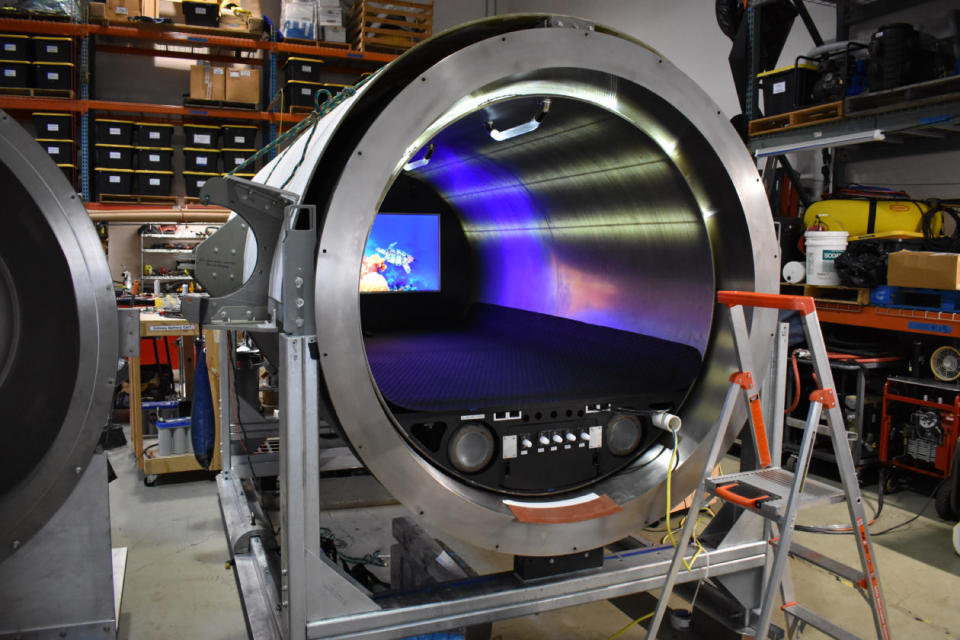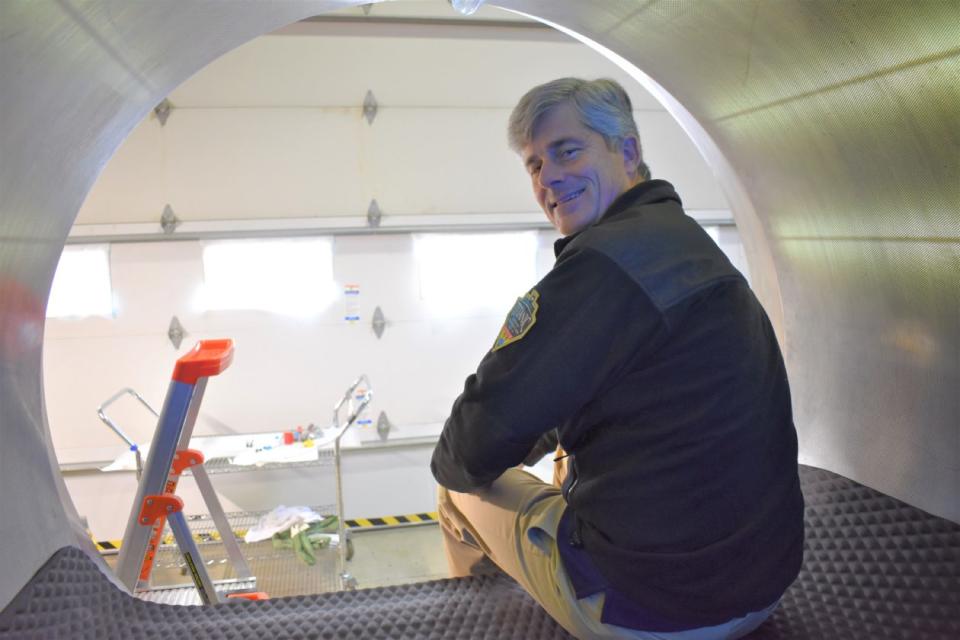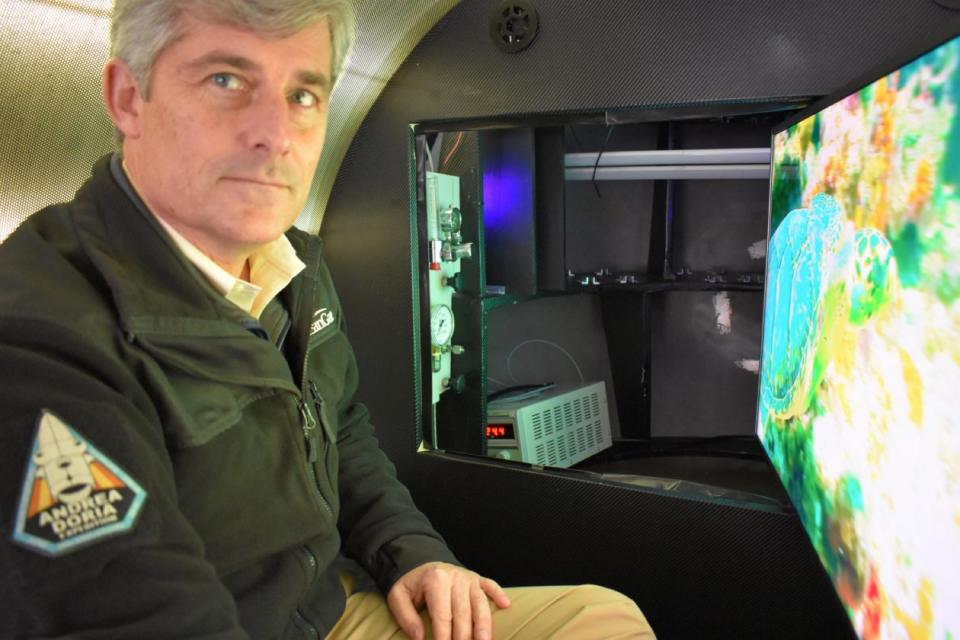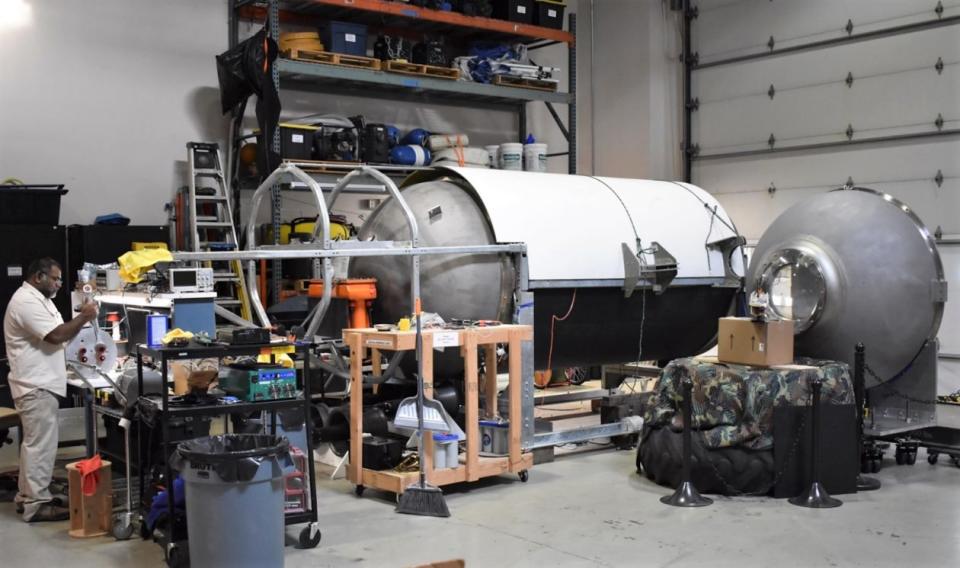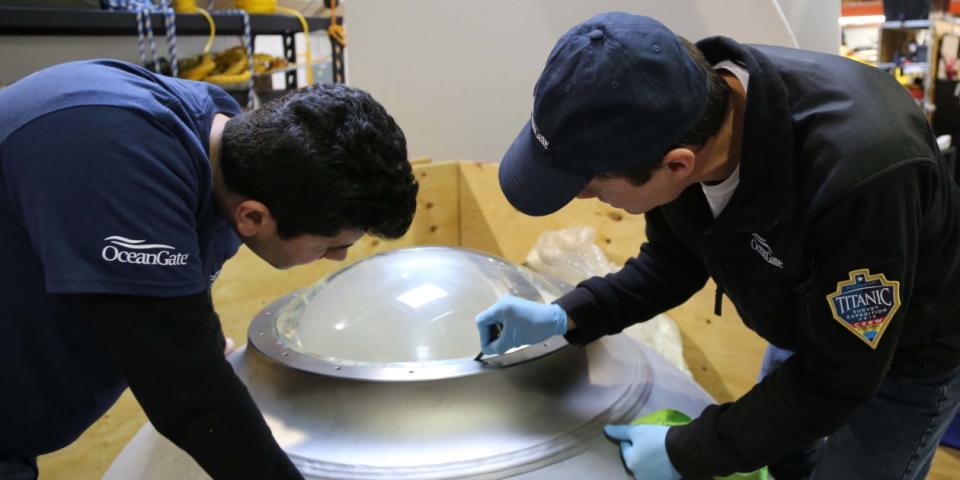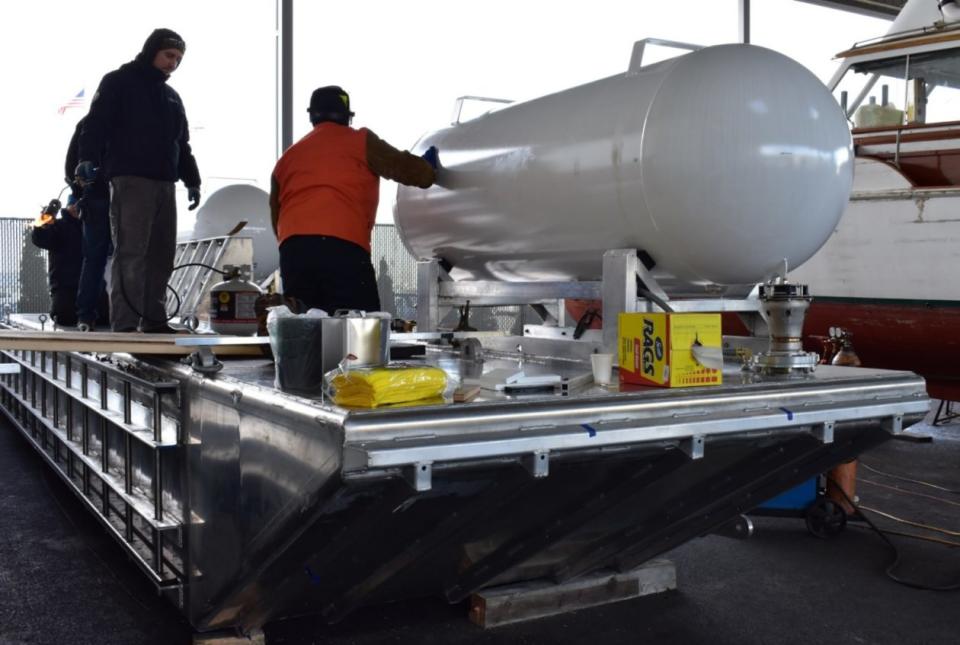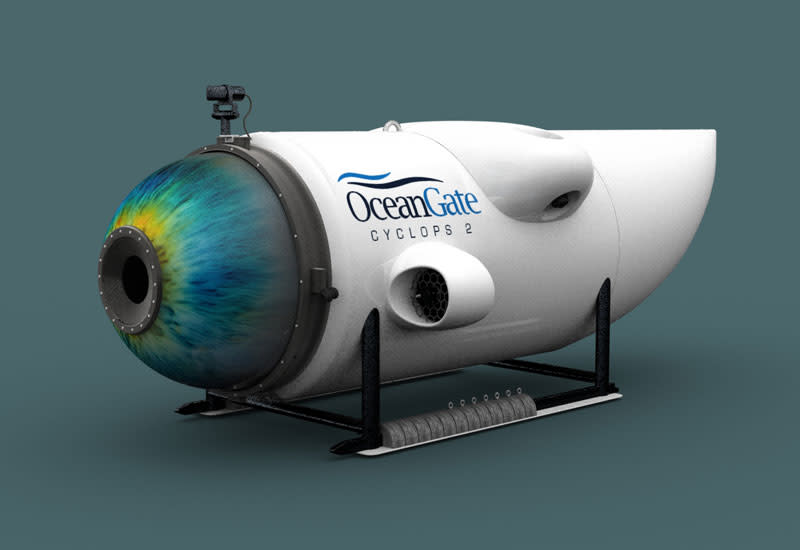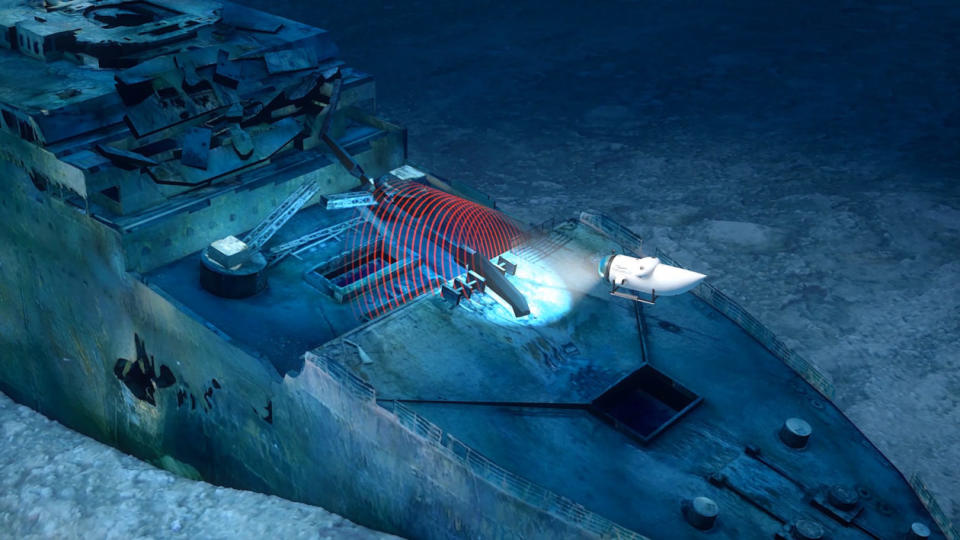Some assembly required: OceanGate readies Titanic sub for the holidays
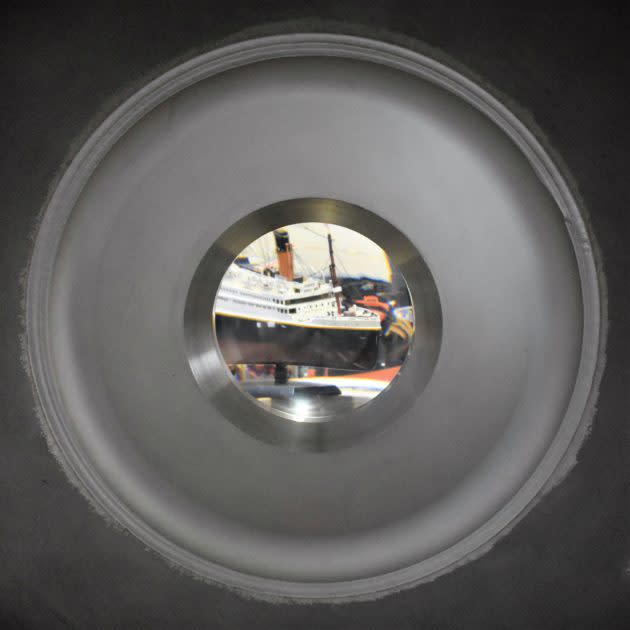
EVERETT, Wash. — Almost all the pieces are in place for a Yuletide delivery of Titanic proportions: the completion of a multimillion-dollar underwater craft that’s due to explore the world’s most famous shipwreck next year.
Cyclops 2, a five-person submersible that takes advantage of the latest in marine engineering, is taking shape at OceanGate Inc.’s headquarters on Everett’s waterfront.
“The goal is to have it in the water by the end of the year,” said Stockton Rush, OceanGate’s CEO and co-founder.
Last week, Cyclops 2 was still on OceanGate’s shop floor, and workers were still turning screws into place on a motor control housing. One of the most important pieces, a titanium dome that’s fitted with a clear acrylic viewport, was sitting alongside a cylinder that’s built to withstand the crushing pressures of the Atlantic Ocean at a depth of 13,000 feet (4,000 meters).
The lightweight pressure vessel, made of filament-wound carbon fiber, is Cyclops 2’s most notable technological innovation. But lots of innovations in materials science, electronics and manufacturing methods have had to come together to get OceanGate into the home stretch.
“If you could have seen it out here maybe a couple of weeks ago, it would be still pretty much empty,” said Tony Nissen, OceanGate’s director of engineering. “This is what happens when you run a program completely in parallel: It comes together at the same time. All of a sudden, it’s there, spawned out of some kind of nucleus.”
All the pieces should be completely put together sometime this week. Then the OceanGate team will dip the 22-foot-long craft into Puget Sound’s waters to check its buoyancy and adjust its weight balance.
If the shallow-water tests in Puget Sound work out as expected, the pressure vessel and its platform will be trucked off for deep-water tests in the Bahamas next spring. Then it’ll be brought up to Newfoundland for the first round of Titanic expeditions next summer.
Rush himself will pilot Cyclops 2 for the test dives.
“I like exploring, and I like doing new stuff, and there’s nothing newer than test-flying a plane or a submersible,” he told GeekWire. “And particularly for the deep dives, I think it’s appropriate that I do it before I put somebody else in something that I’m responsible for.”
Cyclops 2 builds on nearly a decade’s worth of experience with submersibles: OceanGate started out with a previously owned sub called Antipodes that was designed to dive to 1,000 feet. The company constructed its Cyclops 1 sub in league with the University of Washington’s Applied Physics Lab, to take on dives as deep as 1,600 feet (500 meters). Last year, that craft explored the legendary wreck of the Andrea Doria, off the coast of Massachusetts.
OceanGate is upping its game for the Titanic, the world’s best-known shipwreck. As anyone who’s seen the blockbuster film knows, the luxury liner hit an iceberg and sank during its maiden voyage in 1912, leaving more than 1,500 deaths in its wake.
The wreck was rediscovered in 1985, and since then, its deterioration has been documented by a string of underwater expeditions.
Bridget Buxton, an underwater archaeologist from the University of Rhode Island who is serving as the science program coordinator for OceanGate Foundation on the Titanic expedition, said next summer’s trips will provide an update on the Titanic’s condition — and a baseline for future visits.
“The Titanic is an analogy for what’s going to happen to every single World War I wreck over the next 20 to 30 years,” she told GeekWire. “To me, that is the biggest question — the deterioration question. The significance of what we see or record might not be determined until those future missions.”
OceanGate’s plan for next year’s maiden round of expeditions calls for a marine researcher to be on the crew for every dive over the course of a six-week field season. Each crew will also include mission specialists, who’ll be paying more than $100,000 each to take part in the adventure.
Joel Perry, OceanGate’s director of media and marketing, said the mission specialists shouldn’t be called tourists. “It’s tourism like climbing Everest is tourism,” he said. “You’ve got to carry your own bags, and you’ve got to train. … It’s not tourism like you’re going to go on a bus tour to the Grand Canyon.”
Interest has been high, but Perry said there are “a few more spots to fill,” at a ticket price of $105,129 for next summer. That figure goes up to $108,218 for 2019.
“We came up with the number by looking at what somebody would have paid for first-class passage in 1912, and we just adjusted for inflation,” Perry explained. “A lot of these folks that go there now would see themselves as the kind of folks who might have been in that first-class passage on the Titanic.”
The crew’s accommodations may not provide first-class luxury, but they’ll provide lots of technological twists: The interior of the cylindrical pressure vessel is already done up with mood lighting behind a fine mesh of metal. There’s a high-definition video monitor that’ll be hooked up to backward-looking cameras on the hull’s exterior, and will serve as a virtual window (and a backup camera for the pilot).
Eventually, Rush envisions covering the interior walls with flexible video displays. “If we have this all be 4K res, now you’ve got a holodeck,” he said. “What we’d like to do is almost ‘disappear’ the whole hull.”
The electronics and the motor control systems, including two high-performance computer servers, will be tucked behind the monitor wall. Those servers will store the terabytes’ worth of data due to be collected by Cyclops 2’s cameras, sonar sensors and laser scanners during each dive. The network will also provide Wi-Fi connectivity for the tablets used by crew members to “look at other screens, or go and get fish ID information,” Rush said.
While the sub is underwater, the primary link to the surface will be a voice-to-text acoustic communication system that sends data at a mere 5,000 to 10,000 bits per second. So don’t expect to be watching Netflix or browsing the Web while you’re on a dive. Not that you’d want to: Watching the underwater vistas out the 21-inch-wide viewport at the front of the sub will be the main attraction.
Each roughly four-hour visit to the Titanic will begin with a close look at the wreck’s iconic bow, then move on to the dive’s scientific survey objectives, then continue with wide-ranging sightseeing. During the first field season, OceanGate aims to get the bow section fully scanned in high definition and make a start on imaging the area leading to the stern section, less than a half-mile (600 meters) away.
Cyclops 2’s camera views will be combined with laser scans and sonar scans to produce a 3-D virtual-reality model of the Titanic site, created in coordination with OceanGate’s media partners. Those partners — including the companies behind a TV documentary that’ll be aired worldwide — should be revealed within the next month or so, Perry said.
2018 will be a big year for Cyclops 2, but Buxton emphasized that it’ll be only the first year of what she and other scientists expect will be a new era for marine technology and deep-sea studies.
“What we expect will come out of this is a new model, and a better model for future expeditions to the 1,000 wrecks we know nothing about,” she said. “The question that the scientists might be asking when they come up is, ‘What’s next? Where are we going after Titanic?’ ”
Update for 10:40 p.m. PT Dec. 17: We’ve clarified the role of the OceanGate Foundation in supporting the science component of OceanGate Expeditions’ mission to the Titanic.

